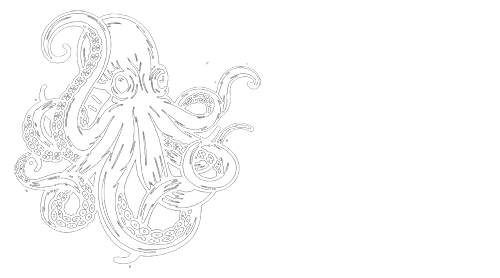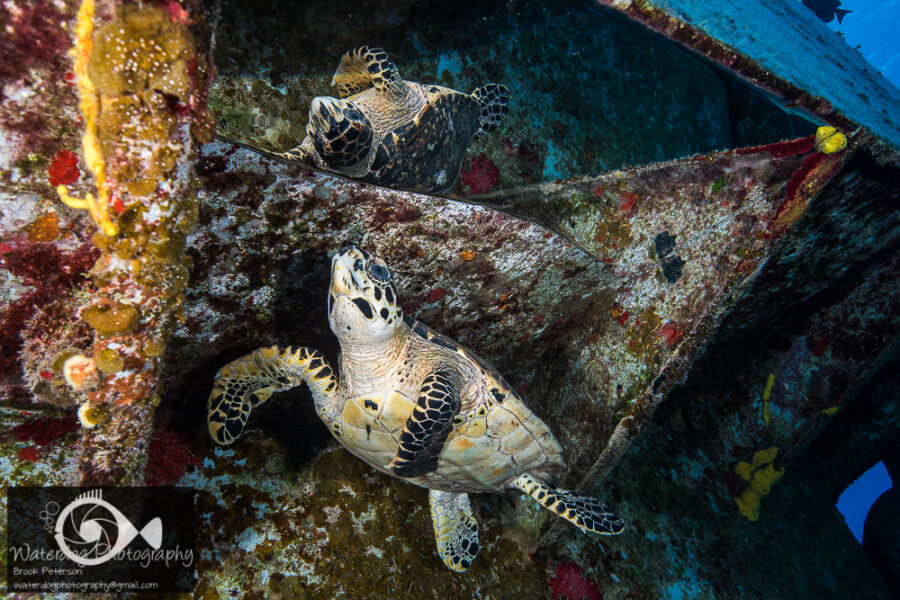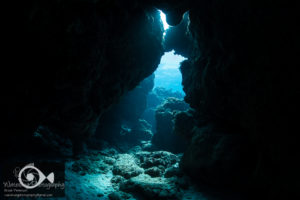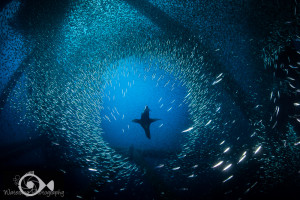One of the first techniques I explored was getting a reflection of an animal against trapped air which creates a mirror like surface.

This turtle is gazing at his own reflection in air that was trapped under a part of the Kittiwake wreck in Grand Cayman. Of course, you could just use the surface of the water for a reflection shot, but I was more interested in how I could create this effect in deep water. On another dive, I found a half a clam shell which I used as a tool to hold air from my exhale. This gave me a portable mirror that I could hold over any small animal to capture its reflection.
Using tools on the fly, such as a clam shell, is great for spontaneous photography, but sometimes we must plan ahead and bring tools with us. One of the most well-known tools for macro photography is the snoot. Snoots are devices that attach to the end of your strobe that shape the light by reducing the beam angle of your strobe. This has the effect of putting a spotlight on your subject without lighting up the surrounding area. It is an especially effective tool for isolating your subject. Snoots vary in design and can be purchased or homemade.
At one time, I had a very creative guide who carried lots of different tools with him to help photographers get creative shots. One of these tools was a matte black plastic slate. The slate was dual purpose. He used it to place behind a subject that had a very busy background so that the subject popped out. On another occasion, he trapped tiny bubbles from his regulator on the slate to give a more interesting background. To add one more dimension to this tool, I could have focused my lens on the bubbles and perhaps caught the reflection of the fish in each tiny bubble.
This same guide carried some other colored slates with him in case his clients wanted to try a creative colored background. Although I thought this made the image look a little too contrived, it is worth mentioning here. Perhaps under the right circumstances, this would create a pleasing image.

Another fun tool in my guide’s bag of tricks was a mirror. Placed behind a subject it can also create an interesting effect.

One last tool is a homemade one that a friend of mine dubbed “ringflection.” This effect is created by attaching a piece of pipe to the front of the camera’s port so that the lens is looking down the barrel of the pipe. The subject will be reflected inside the pipe, giving a swirly frame around it.
This particular tool has a lot of room for creativity as the shape of the swirl can change with the angle of the pipe, or the length of the lens, or the length of the pipe.
These are just a few ideas for creating eye-popping images that don’t look like everyone else’s. Try a few of them and see how you like the results. I would be interested in feedback, so if you would like to comment, please do so by clicking on “comment” at the top of this post.
Join me for a workshop! Travel to a great destination where you will have exclusive coaching on your underwater photography. Meet new people, network, try new techniques, and learn with the pros! Click on Travel and Workshops for more information!
Subscribe now!
As always, if you enjoy my images please visit my website, waterdogphotography.com, or give me a like on Facebook at Waterdog Photography Brook Peterson. Don’t forget to follow me here at waterdogphotographyblog and please feel free to share on Facebook or other social media.
My photographs are taken with a Nikon D810 in Sea and Sea Housing using two YS-D1 or YS-D2 Strobes.
All images and content is copyrighted by Brook Peterson and may only be used with written permission. Please do not copy or print them. To discuss terms for using these images, please contact me.
© 2025 Brook Peterson










